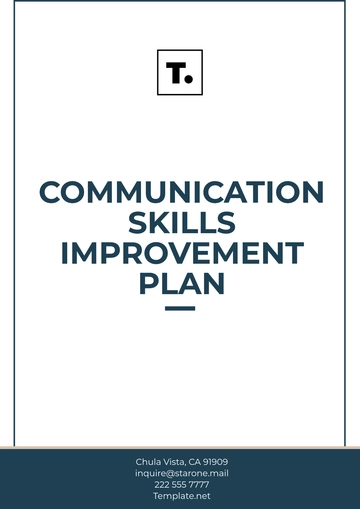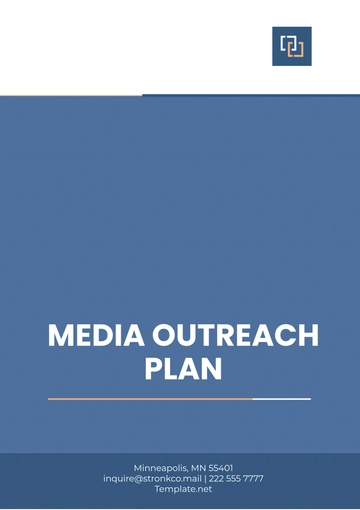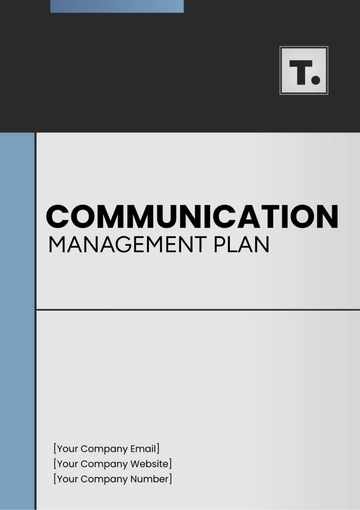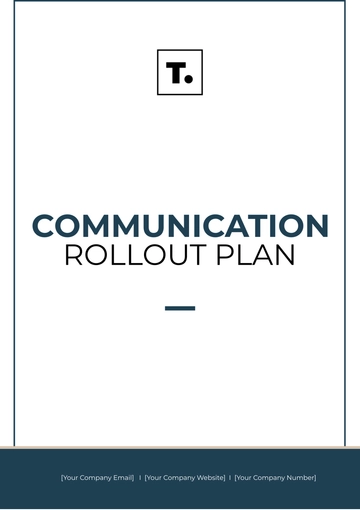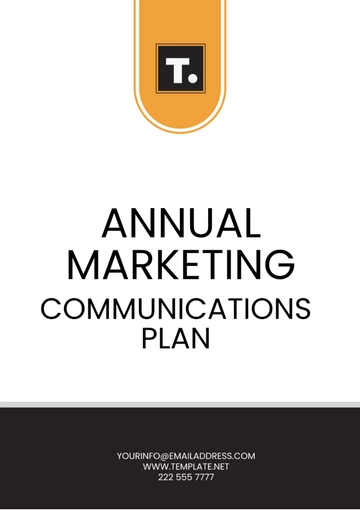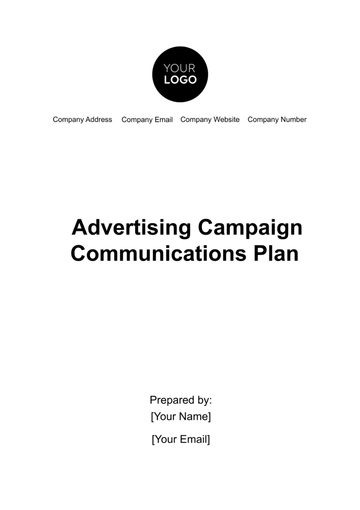Free Advertising Campaign Communications Plan
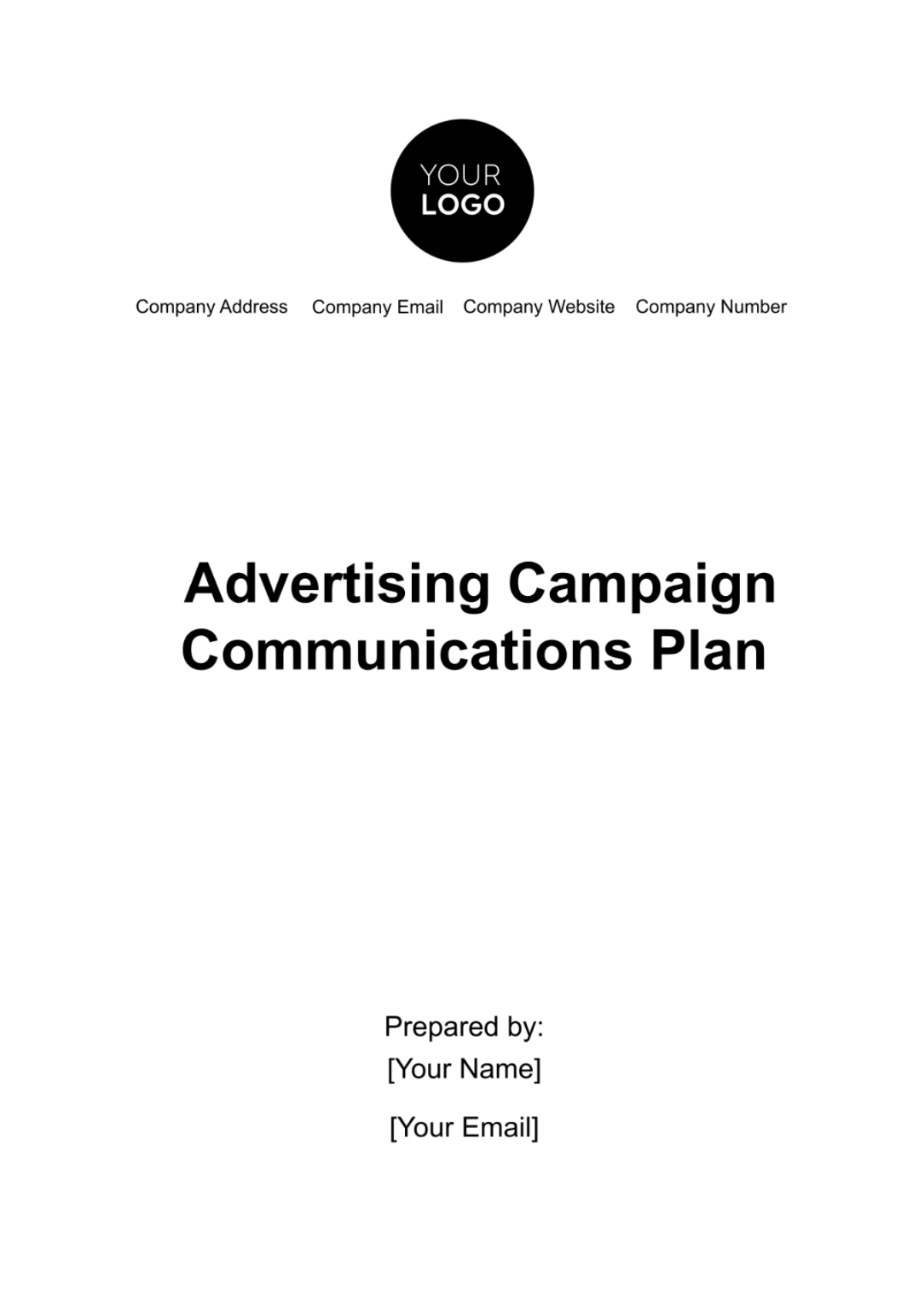
I. Introduction
This document presents the communications plan for [Your Company Name]'s upcoming advertising campaign, titled [Campaign Name]. The campaign is focused on reinforcing our position as a leader in the advertising industry, particularly in digital marketing. Our objective is to demonstrate our expertise in delivering effective and innovative advertising solutions to a diverse client base.
The plan outlines our strategies for reaching and engaging our target audience, the channels we will utilize, budget allocation, and the metrics for measuring the success of the campaign. The duration of the campaign is from July 1, 2050, to December 31, 2050. The following sections detail the various components of this comprehensive plan.
II. Campaign Overview
The primary objective of this campaign is to elevate the brand recognition and market presence of [Your Company Name]. We aim to achieve this by executing a multifaceted advertising campaign that emphasizes our proficiency in delivering state-of-the-art digital marketing solutions. The campaign will also focus on showcasing our unique approach to creating tailored advertising strategies for each client, ensuring optimal impact in their respective markets.
A. Strategy
Our approach will involve a combination of targeted digital marketing, content creation, and strategic partnerships. The campaign will leverage the latest trends in digital media to reach our audience effectively. Key strategies include:
Digital Marketing
1.1. We will optimize our web content to rank higher in search engine results, enhancing visibility to potential clients. This will involve keyword research, on-page optimization, and building a strong backlink profile.
1.2. We will create targeted ad campaigns on platforms like Google Ads and social media. These campaigns will be designed to drive traffic to our website, focusing on high conversion keywords and audience segmentation.
1.3. Leveraging platforms like LinkedIn, Twitter, and Instagram, we will create engaging ad content tailored to each platform's audience. This approach aims to build brand awareness and drive engagement through creative visuals and compelling copy.
Content Creation
2.1. We will develop a diverse range of content, including blog posts, whitepapers, infographics, and videos. This content will be designed to educate our audience about the latest trends in advertising and demonstrate our expertise.
2.2. A content calendar will ensure a consistent and regular posting schedule, which is crucial for audience retention and SEO.
2.3. Engagement will be measured through metrics like page views, time on page, and social shares.
Strategic Partnerships: By collaborating with influencers and industry leaders, we aim to tap into new audiences and build trust. These partnerships will involve co-creating content, joint webinars, and cross-promotional activities. We will carefully select partners whose brand values align with ours and whose audience complements our target market.
B. Target Markets
Business-to-Business (B2B)
1.1. Our focus will be on engaging corporations and SMEs in sectors where digital marketing is essential but underutilized, such as technology, retail, and consumer goods.
1.2. We will develop industry-specific marketing strategies that address the unique challenges and needs of each sector.
1.3. Networking events, trade shows, and targeted LinkedIn campaigns will be key in reaching these audiences.
Business-to-Consumer (B2C)
2.1. The B2C strategy will target tech-savvy young professionals and early adopters, primarily through social media platforms and online communities.
2.2. We will leverage data analytics to understand consumer behavior and preferences, allowing us to create personalized and relevant advertising content.
2.3. Engagement strategies will include interactive campaigns, such as contests and user-generated content, to foster a deeper connection with the brand.
By the end of the campaign, we anticipate an increase in brand awareness, a significant rise in client inquiries, and a solidified reputation as a leader in innovative advertising solutions. We will measure these outcomes through various KPIs, including website traffic, lead generation, and engagement rates on social media platforms.
III. Target Audience
The success of the [Campaign Name] campaign hinges on a clear understanding and precise targeting of our intended audience. We categorize our audience into two main segments:
A. Professional Individuals
Demographics: Aged between [25 and 45], predominantly working in mid to senior-level positions. This group includes marketing managers, business owners, and decision-makers in organizations.
Behavioral Traits: Digitally literate, regularly consumes online content, and is active on social media platforms. They value data-driven decision-making, innovative solutions, and are always on the lookout for new trends and technologies to enhance their business.
Psychographics: These individuals are ambitious, career-oriented, and value efficiency and effectiveness in marketing solutions. They are likely to respond to messages that emphasize innovation, ROI, and cutting-edge technology.
B. Corporate Entities
Industry Focus: Technology, Retail, and Consumer Goods sectors. These industries are known for their dynamic market presence and a constant need for innovative advertising strategies.
Company Size: Medium to large enterprises with a significant marketing budget and a willingness to invest in new advertising strategies.
Organizational Culture: Companies that are forward-thinking, open to embracing new technologies and methods in marketing, and have a track record of valuing creative approaches to advertising.
By targeting these specific groups, [Your Company Name] will be able to tailor its messaging and campaigns to resonate more effectively, driving better engagement and achieving the desired outcomes of the campaign.
IV. Key Messages
The core messages of the [Campaign Name] campaign are designed to resonate with our target audience, reflecting [Your Company Name]'s values, capabilities, and unique selling propositions. These key messages will be consistently conveyed across all communication channels to ensure a cohesive brand narrative.
A. Leading Edge in Advertising Innovation
Message: "[Your Company Name] is at the vanguard of advertising innovation, consistently pioneering new approaches in digital marketing."
Purpose: To establish our brand as a trailblazer in the industry, showcasing our commitment to staying ahead of market trends and technological advancements.
B. Customized Solutions for Every Client
Message: "We provide tailored advertising solutions, meticulously crafted to meet each client's unique needs and objectives."
Purpose: To communicate our ability to understand and adapt to diverse client requirements, emphasizing our personalized approach to each project.
C. Expertise in Digital Marketing and Brand Strategy
Message: "Our expertise in digital marketing and brand strategy is unparalleled, ensuring maximum impact and efficiency for our clients."
Purpose: To highlight our deep knowledge and successful track record in both digital marketing and strategic brand development, reinforcing trust and credibility among our audience.
D. Commitment to Measurable Results
Message: "We are committed to delivering measurable results, aligning our strategies with our clients' goals for tangible success."
Purpose: To underscore our focus on achieving quantifiable outcomes, ensuring that our campaigns not only resonate creatively but also deliver on performance metrics.
E. Fostering Long-Term Partnerships
Message: "At [Your Company Name], we believe in building long-term partnerships with our clients, growing together through mutual success."
Purpose: To convey our dedication to not just short-term projects but long-lasting relationships, emphasizing our role as a reliable and invested partner in our clients' growth.
Each of these key messages will be tailored to the specific context and platform on which they are delivered, ensuring relevance and maximum engagement with our target audience.
V. Communication Channels
The selection of communication channels is critical to the success of the [Campaign Name] campaign. Our approach includes a mix of digital and traditional media, tailored to reach our target audience effectively. The following channels will be utilized, each with a specific role and purpose:
A. Social Media Platforms
These platforms will be used for engaging with both B2B and B2C audiences. We will deploy a mix of organic and paid content, including thought leadership articles, behind-the-scenes looks at campaign creation, and interactive posts to foster engagement.
B. Email Marketing
Monthly newsletters will provide industry insights, company updates, and showcase successful case studies to keep our audience informed and engaged. Tailored email campaigns will be sent to segmented lists, ensuring that the content is relevant to each recipient.
C. Webinars and Online Workshops
These will be held bi-monthly, focusing on current trends in digital marketing and advertising. They serve as a platform for thought leadership and allow for direct engagement with attendees.
D. Press Releases and Public Relations
Strategic releases to industry publications and general media will be used to announce major campaign milestones and successes. This will enhance our credibility and public profile.
E. Website and SEO
Our company website will be optimized for search engines to improve visibility. It will also be regularly updated with blog posts, case studies, and whitepapers to provide valuable content to visitors.
F. Industry Events and Conferences
Participation in key industry events will provide networking opportunities and enhance brand visibility. We plan to engage in speaking opportunities, panel discussions, and sponsorship roles.
G. Direct Mail Campaigns
For select high-value prospects, personalized direct mail pieces will be used. These will complement our digital efforts and provide a tangible touchpoint.
H. Interactive Campaigns
Contests, polls, and user-generated content initiatives on social media will be used to increase engagement and allow for direct interaction with our audience.
VI. Budget Allocation
The budget for the [Campaign Name] campaign is planned to ensure efficient and effective use of resources. The following table provides a detailed breakdown of the estimated costs allocated to each component of the campaign, along with the corresponding percentage of the total budget:
Component | Estimated Cost | Percentage of Total Budget |
Social Media Ads | $100,000 | 27.03% |
Email Campaigns | $50,000 | 13.51% |
Webinar Production | $30,000 | 8.11% |
Press Releases | $20,000 | 5.41% |
Content Creation | $40,000 | 10.81% |
Website & SEO | $60,000 | 16.22% |
Industry Events | $25,000 | 6.76% |
Direct Mail Campaigns | $15,000 | 4.05% |
Interactive Campaigns | $20,000 | 5.40% |
Miscellaneous | $10,000 | 2.70% |
Total | $370,000 | 100% |
This budget reflects our commitment to a diverse range of advertising efforts, ensuring a comprehensive approach to achieving the campaign's objectives. The allocation will be regularly reviewed and adjusted as needed based on the performance and ROI of each component.
VII. Timeline
The timeline for the [Campaign Name] campaign is structured to ensure a coherent and systematic rollout of activities:
Phase | Key Activities | Timeframe |
Preparation | Market research, initial strategy development, team assignments | June 15 - 30, 2050 |
Planning | ||
Development | ||
Soft Launch | ||
Full Execution | ||
Monitoring | ||
Review & Wrap-Up |
This timeline provides a structured and phased approach, allowing for flexibility and adaptability as the campaign progresses.
VIII. Conclusion
The [Campaign Name] campaign, as outlined in this communication plan, represents a comprehensive approach to strengthening the market position and brand awareness of [Your Company Name]. Through a carefully curated mix of digital and traditional media, coupled with innovative strategies and targeted content, we aim to achieve a significant impact in the advertising landscape. The success of this campaign will be measured not only in quantitative terms but also in the qualitative enhancement of [Your Company Name]'s reputation and client relationships.
- 100% Customizable, free editor
- Access 1 Million+ Templates, photo’s & graphics
- Download or share as a template
- Click and replace photos, graphics, text, backgrounds
- Resize, crop, AI write & more
- Access advanced editor
Communicate your campaign effectively with our Advertising Campaign Communications Plan Template! This Template.net solution is made to be easily editable, allowing you to create a detailed communications plan. The AI Editor Tool simplifies the process, helping you ensure your campaign message is clear and impactful! Grab your customizable solution immediately!
You may also like
- Finance Plan
- Construction Plan
- Sales Plan
- Development Plan
- Career Plan
- Budget Plan
- HR Plan
- Education Plan
- Transition Plan
- Work Plan
- Training Plan
- Communication Plan
- Operation Plan
- Health And Safety Plan
- Strategy Plan
- Professional Development Plan
- Advertising Plan
- Risk Management Plan
- Restaurant Plan
- School Plan
- Nursing Home Patient Care Plan
- Nursing Care Plan
- Plan Event
- Startup Plan
- Social Media Plan
- Staffing Plan
- Annual Plan
- Content Plan
- Payment Plan
- Implementation Plan
- Hotel Plan
- Workout Plan
- Accounting Plan
- Campaign Plan
- Essay Plan
- 30 60 90 Day Plan
- Research Plan
- Recruitment Plan
- 90 Day Plan
- Quarterly Plan
- Emergency Plan
- 5 Year Plan
- Gym Plan
- Personal Plan
- IT and Software Plan
- Treatment Plan
- Real Estate Plan
- Law Firm Plan
- Healthcare Plan
- Improvement Plan
- Media Plan
- 5 Year Business Plan
- Learning Plan
- Marketing Campaign Plan
- Travel Agency Plan
- Cleaning Services Plan
- Interior Design Plan
- Performance Plan
- PR Plan
- Birth Plan
- Life Plan
- SEO Plan
- Disaster Recovery Plan
- Continuity Plan
- Launch Plan
- Legal Plan
- Behavior Plan
- Performance Improvement Plan
- Salon Plan
- Security Plan
- Security Management Plan
- Employee Development Plan
- Quality Plan
- Service Improvement Plan
- Growth Plan
- Incident Response Plan
- Basketball Plan
- Emergency Action Plan
- Product Launch Plan
- Spa Plan
- Employee Training Plan
- Data Analysis Plan
- Employee Action Plan
- Territory Plan
- Audit Plan
- Classroom Plan
- Activity Plan
- Parenting Plan
- Care Plan
- Project Execution Plan
- Exercise Plan
- Internship Plan
- Software Development Plan
- Continuous Improvement Plan
- Leave Plan
- 90 Day Sales Plan
- Advertising Agency Plan
- Employee Transition Plan
- Smart Action Plan
- Workplace Safety Plan
- Behavior Change Plan
- Contingency Plan
- Continuity of Operations Plan
- Health Plan
- Quality Control Plan
- Self Plan
- Sports Development Plan
- Change Management Plan
- Ecommerce Plan
- Personal Financial Plan
- Process Improvement Plan
- 30-60-90 Day Sales Plan
- Crisis Management Plan
- Engagement Plan
- Execution Plan
- Pandemic Plan
- Quality Assurance Plan
- Service Continuity Plan
- Agile Project Plan
- Fundraising Plan
- Job Transition Plan
- Asset Maintenance Plan
- Maintenance Plan
- Software Test Plan
- Staff Training and Development Plan
- 3 Year Plan
- Brand Activation Plan
- Release Plan
- Resource Plan
- Risk Mitigation Plan
- Teacher Plan
- 30 60 90 Day Plan for New Manager
- Food Safety Plan
- Food Truck Plan
- Hiring Plan
- Quality Management Plan
- Wellness Plan
- Behavior Intervention Plan
- Bonus Plan
- Investment Plan
- Maternity Leave Plan
- Pandemic Response Plan
- Succession Planning
- Coaching Plan
- Configuration Management Plan
- Remote Work Plan
- Self Care Plan
- Teaching Plan
- 100-Day Plan
- HACCP Plan
- Student Plan
- Sustainability Plan
- 30 60 90 Day Plan for Interview
- Access Plan
- Site Specific Safety Plan
